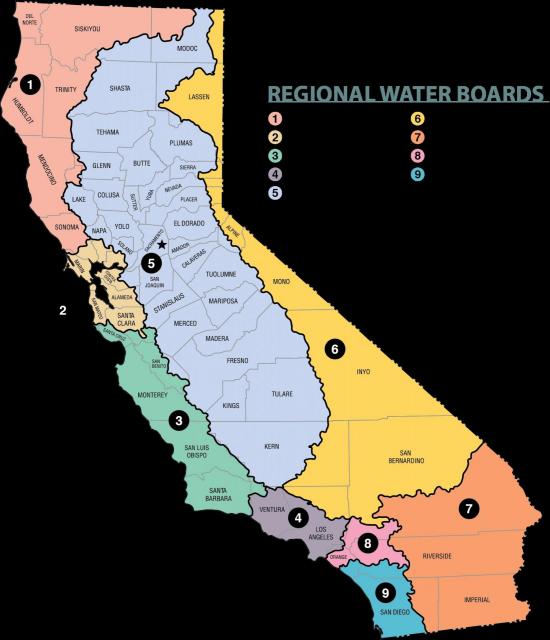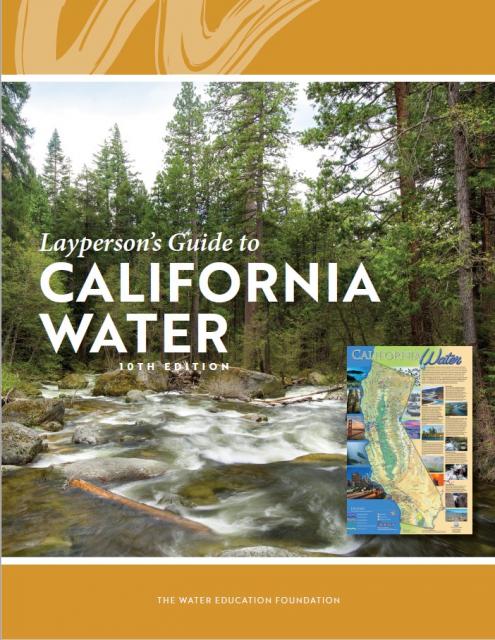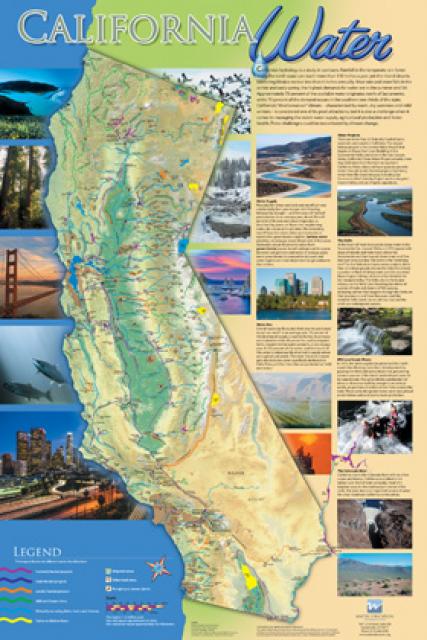Water Quality
California’s nearly 40 million residents all depend on clean water to thrive, as do the fish and wildlife and industries such as agriculture, food processing and electronics that help power the world’s fourth-largest economy.
Rivers and other surface waters, however, can carry a host of pollutants, both natural and manufactured, that can contaminate drinking water, harm wildlife and livestock and damage crops.
Groundwater in California also can be contaminated by pollutants, including long-lived toxic chemicals from military and industrial uses that seep underground.
Perhaps the greatest threat to surface water is nonpoint sources of pollution, also known as polluted runoff. Common sources include runoff from agricultural fields and abandoned mines, and stormwater runoff from streets and construction sites.
Stormwater is typically not treated before it empties into rivers, bays and oceans. The runoff can carry a variety of contaminants such as pesticides, nitrates from fertilizers, pathogens from animal waste, and automotive and industrial chemicals.
Microplastics that shred off clothes and tires and are used in many cosmetic and personal care products – plastic debris measuring less than 5 millimeters that come from a variety of consumer products – are an increasing water quality concern. These bits that measure less than the size of a sesame seed are found virtually everywhere on the planet. They enter the water as industrial microbeads or larger plastic litter that degrade into small pellets.
Part of the appeal of microplastics to hygienic and medical interests is their tendency to absorb surrounding chemicals and later release them. The absorbency makes microplastics especially dangerous as water contaminants. The particles can sponge up harmful chemicals through the food chain as they are ingested by fish and other animals.
In 2021 the State Water Resources Control Board (State Water Board) issued a draft policy that would require water agencies to test for microplastics in drinking water. And in 2022, the board approved a policy handbook and established a standard method for testing and reporting microplastics in drinking water for up to 30 of California’s largest water providers.
Water Quality Regulation in California
Water quality in California is regulated by several state agencies, including the State Water Board and its nine regional boards – North Coast, San Francisco Bay, Central Coast, Los Angeles, Central Valley, Lahontan, Colorado River Basin, Santa Ana and San Diego.
 The State Water Board enforces clean
water laws and administers the Clean Water Grant Program, which
funds construction of wastewater treatment facilities. The State
Water Board also issues general permits for municipalities and
construction sites aimed at preventing contaminants from entering
municipal storm sewers.
The State Water Board enforces clean
water laws and administers the Clean Water Grant Program, which
funds construction of wastewater treatment facilities. The State
Water Board also issues general permits for municipalities and
construction sites aimed at preventing contaminants from entering
municipal storm sewers.
The State Water Board’s updated Bay-Delta Water Quality Control Plan for the lower San Joaquin River and southern Delta is based on the premise that increased flows kept in the river rather than diverted for human use will improve water quality. Regulators have yet to implement the update as they are considering an alternative plan submitted by water users that calls for a combination of flow and non-flow actions.
Drinking Water Quality
According to the Centers for Disease Control and Prevention, “Many improvements in health over the last 100 years can be linked to better water quality. In fact, expanding access to safe drinking water was one of the United States’ most important public health achievements of the 20th century.”
Drinking water standards and regulations are developed by federal and state agencies to protect public health. (See also How is Drinking Water Treated?)
The federal Safe Drinking Water Act (SDWA) regulates drinking water quality on the national level. Due to the stringent drinking water quality standards in California, the U.S. Environmental Protection Agency allows the state to administer the SDWA. The State Water Board’s Division of Drinking Water regulates public drinking water systems.
In California, many disadvantaged communities in isolated areas and in urban parts of the state do not have access to safe drinking water. It’s been estimated that more than 1 million people in the state regularly lack access to clean drinking water at home, work or school.
With strict and increasing regulations on water quality, high costs of water system maintenance or lack of technical knowledge to apply for grant funding, many disadvantaged regions are at a loss in making substantial water quality and infrastructure improvements.
In 2012, Gov. Jerry Brown signed Assembly Bill 685, making California the first state in the nation to legislatively recognize the human right to “safe, clean, affordable, and accessible water adequate for human consumption, cooking, and sanitary purposes.”
In 2016, the State Water Board adopted a resolution identifying the human right to water as a top priority and core value for it and each of the state’s nine regional water quality boards. In 2019, Gov. Gavin Newsom signed into law the Safe and Affordable Drinking Water Fund to financially support local water systems in providing safe drinking water.
California became the first state in 2024 to adopt a drinking water standard for hexavalent chromium or chromium-6, a toxic heavy metal that is found naturally in some groundwater basins and is also produced by industrial processes. Water systems will have up to four years to comply with the standard, which took effect in late 2024.
Meanwhile, per- and polyfluoroalkyl substances or PFAS in drinking water supply are a rising concern in California and the nation. These man-made substances, which are resistant to heat, water and oil have been widely used as surface coatings in consumer, commercial and industrial products such as clothing and food-packaging. “Once in groundwater, PFAS can be easily transported large distances, tend to accumulate in groundwater, and can contaminate sources of drinking water,” according to the State Water Board. Development of standards and regulations are among the priorities of the Division of Drinking Water, which issued a PFAS fact sheet in 2024.
Updated August 2025











